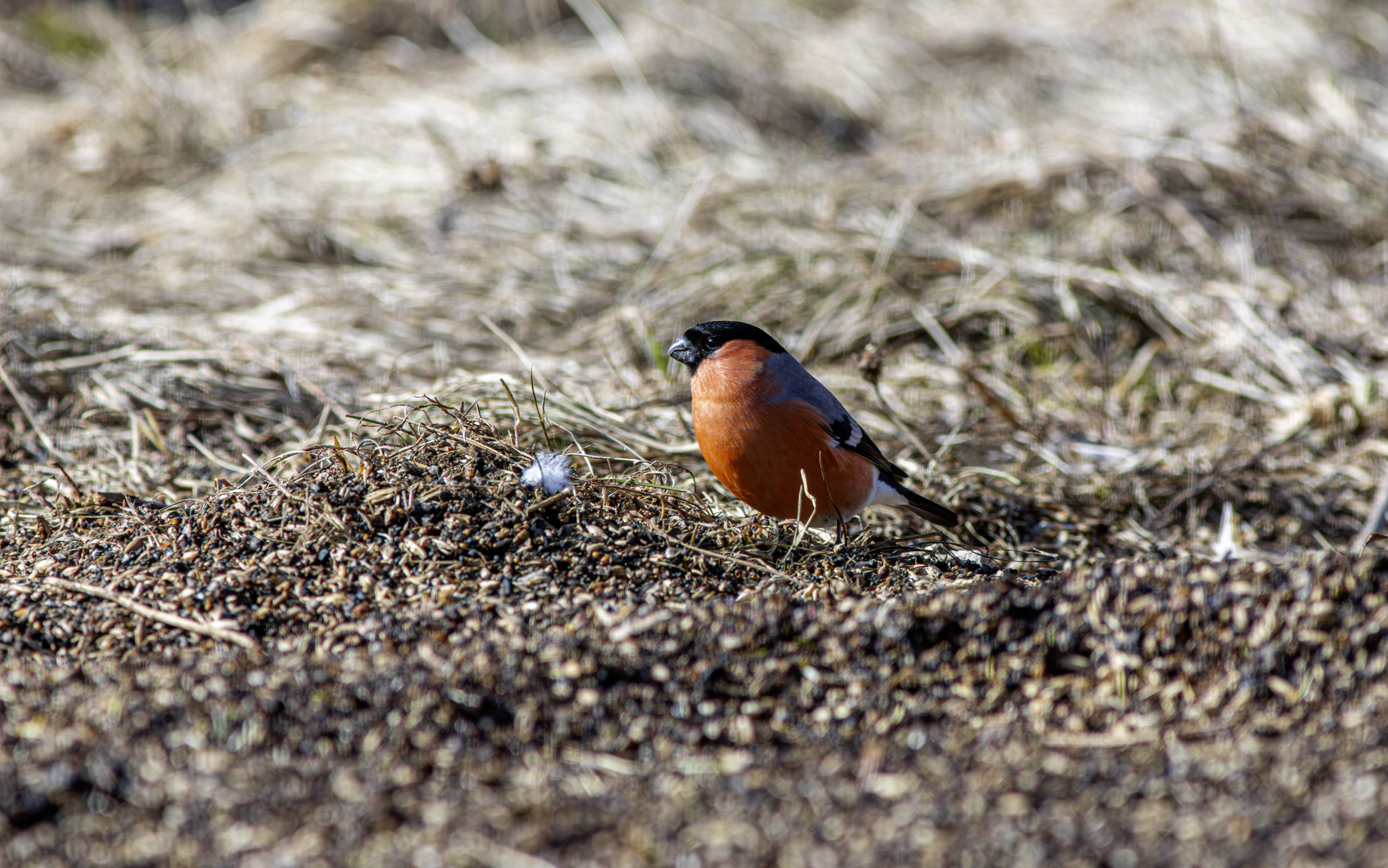The Eurasian Bullfinch (Pyrrhula pyrrhula) is a striking songbird in the finch family (Fringillidae), celebrated for its vibrant coloration and melodic call. It is commonly found across Europe and Asia, favoring wooded areas, gardens, and orchards.
Physical Description
- Size:
- Length: 14–16 cm.
- Wingspan: 22–26 cm.
- Weight: 21–27 g.
- Coloration:
- Males: Bright pinkish-red underparts, black cap, face, and tail, with grayish back and white rump.
- Females: Muted brownish-gray underparts but otherwise similar markings.
- Juveniles: Lack the black cap until maturity.
- Bill:
- Short and stout, adapted for eating seeds.
Behavior
- Diet:
- Primarily feeds on seeds, buds, and fruit.
- In winter, it often targets tree buds, sometimes causing frustration for orchard growers.
- Call:
- A soft, melancholic whistle that sounds like “peu-peu.”
- Social Behavior:
- Often seen in pairs or small family groups, especially outside the breeding season.
Habitat
- Found in a variety of environments, including:
- Deciduous and mixed woodlands.
- Parks, hedgerows, and gardens.
- Prefers areas with dense vegetation for nesting.
Life Cycle
- Breeding Season:
- Occurs from April to July.
- Nesting:
- Builds a cup-shaped nest, typically in dense shrubs or low trees.
- Made of twigs, moss, and lined with soft materials like feathers.
- Eggs:
- Lays 4–6 pale blue eggs with reddish-brown speckles.
- Chicks:
- Hatch after about 12–14 days and fledge within 16–18 days.
Distribution
- Widespread across Europe, Asia, and parts of North Africa.
- Commonly found in temperate regions but absent from northernmost Scandinavia and arid zones.
Conservation Status
- Classified as Least Concern, with stable populations in many areas.
- Local declines may occur due to habitat loss and changes in agricultural practices.
Ecological Role
- Seed Dispersal:
- Plays a role in spreading seeds, contributing to forest regeneration.
- Food Web:
- Preyed upon by hawks, weasels, and other predators.
Interesting Facts
- Budding Behavior:
- Known for eating buds of fruit trees in spring, sometimes causing economic concerns for growers.
- Cultural Significance:
- In folklore, the bullfinch is often associated with good fortune and prosperity.
- Monogamy:
- Bullfinches are typically monogamous, with pairs staying together year-round.
Summary
The Eurasian Bullfinch (Pyrrhula pyrrhula) is a captivating bird whose vibrant plumage and melodic call make it a cherished sight across its range. While its penchant for budding may sometimes conflict with human activities, its ecological contributions and beauty underscore its value in nature. Protecting its habitats ensures the continued presence of this delightful species in our landscapes.
Visited 851 times, 6 visit(s) today
Views: 1366
Subscribe to the newsletter:
